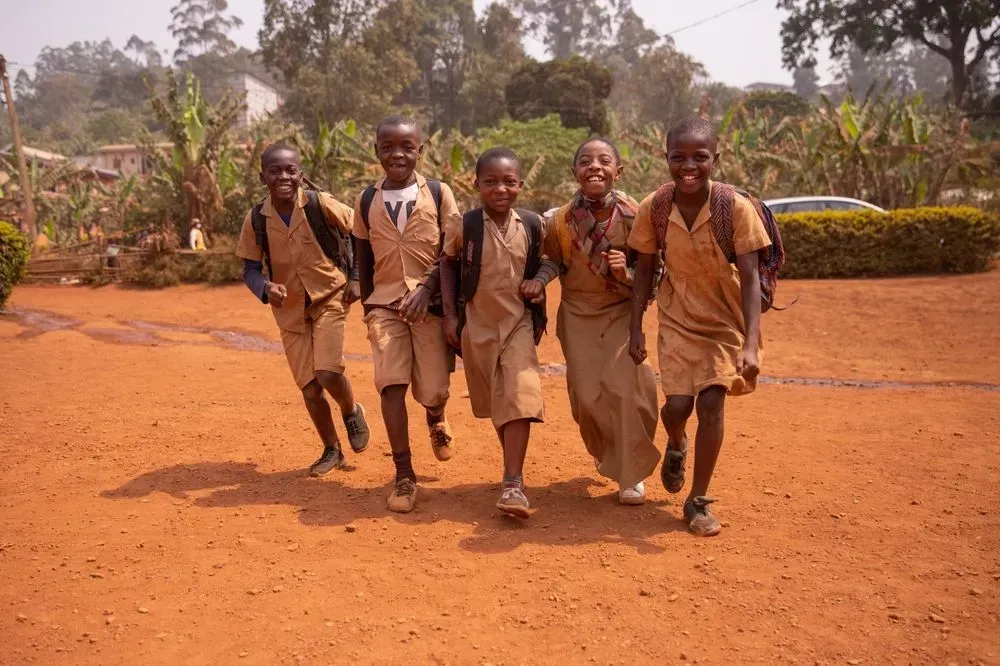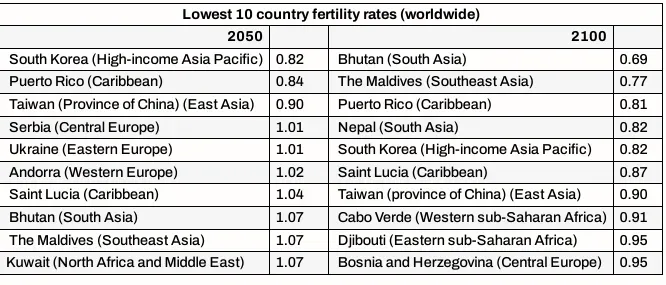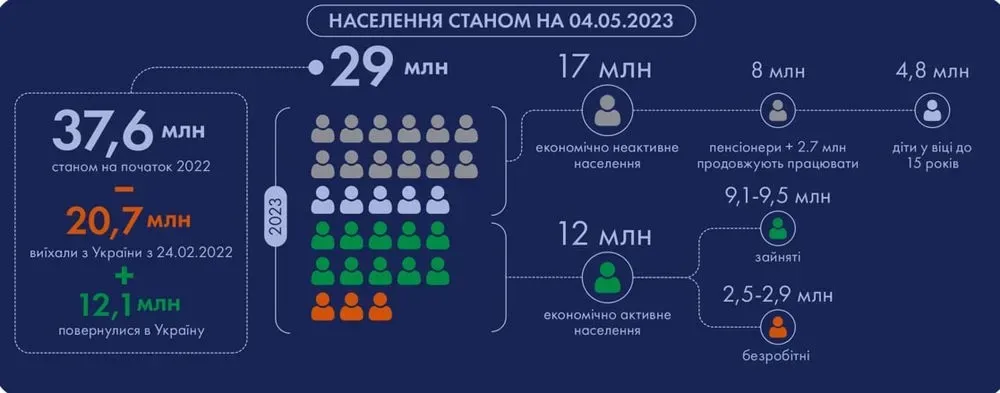The structure of the world's population is changing due to falling birth rates: Ukraine is among the laggards. What's next?
Kyiv • UNN
By 2050, most countries will not be able to maintain their population. In Ukraine, the situation is worsening due to the war, and by 2050, one of the lowest birth rates is predicted.

The world is approaching a future with low birth rates. By 2050, more than three-quarters (155 out of 204) of countries will not have a high enough birth rate to sustain their population in the long term. This is stated in a study by the Institute for Health Metrics and Evaluation (IHME). UNN looked into demographic trends and the situation in Ukraine.
Researchers claim that by 2100, the number of countries where the birth rate will not be able to sustain the population will increase to 97% of countries (198 out of 204).
"Baby boom" and "baby bust" will divide the world
Researchers predict that the world will face two opposing trends: a "baby bust" in developed countries and a "baby boom" in low-income countries. Analysts predict that the number of births worldwide will almost double in low-income regions: from 18% in 2021 to 35% in 2100; and in sub-Saharan Africa, every second child on the planet will be born by 2100.
In 2021, 29% of the world's children were born in sub-Saharan Africa. By 2100, this figure is projected to increase to more than half (54%) of all children.

Total fertility rate
The fertility rate or total fertility rate (TFR), i.e., the number of births per woman, has been declining for a long time.
Over the past 70 years, this global indicator has more than halved: from approximately five children per woman in 1950 to 2.2 children in 2021 (according to some data, it was 2.5).
For population reproduction, this indicator must not be lower than a coefficient of 2.1. Already in 2021, it was lower in more than half of all countries and territories - 110 out of 204. South Korea and Hong Kong have particularly low birth rates. IHME researchers also classify Serbia as a country with an exceptionally low birth rate, where this indicator is below 1.1 children per woman.
But in many sub-Saharan African countries, birth rates remain high – the TFR in the region is almost double the global average: four children per woman in 2021. In Chad, the TFR of seven births is the highest in the world.
Global fertility is projected to decline further in the coming decades, reaching a TFR of about 1.8 in 2050 and 1.6 in 2100, well below replacement level. By 2100, only six out of 204 countries and territories (Samoa, Somalia, Tonga, Niger, Chad, and Tajikistan) are expected to have a birth rate above 2.1 births per woman. In 13 countries, including Bhutan, Bangladesh, Nepal, and Saudi Arabia, this indicator is even projected to fall below one child per woman.
The TFR in Western Europe is projected to be 1.44 in 2050 and decline to 1.37 in 2100, with Israel, Iceland, Denmark, France, and Germany expected to have the highest birth rates – from 2.09 to 1.40 at the end of the century. The rest of Europe and some parts of Asia are projected to have much lower rates.
Most of the world is moving towards natural population decline (when deaths outnumber live births). Only 26 countries are projected to have growing populations in 2100, as live births continue to outnumber deaths, including Angola, Zambia, and Uganda.
Europe faces falling birth rates - Reuters15.02.2024, 17:13 • 26814 views
Situation in Ukraine
The birth rate in Ukraine has never been high. Over the years of research, the highest birth rate was recorded in 1991 - 1.77. As we can see, it hardly approached the optimal indicator of 2.1 necessary for generational change. Further, the indicator decreased even more. In 2001, the indicator was 1.08. In 2002, an increase to a coefficient of 1.1 was recorded. With some fluctuations, the increase in TFR continued until 2015 and at its peak reached 1.51. However, by 2021, the TFR decreased to 1.16, and in 2022, the situation worsened even more significantly, and the indicator fell below 1 - to 0.9.
According to researchers from the Institute for Health Metrics and Evaluation, by 2050, Ukraine will be among the top ten countries with the lowest TFR - it will be 1.01. Only South Korea (0.82), Puerto Rico (0.84), and Taiwan (0.9) will have lower indicators, while Serbia is projected to have a TFR similar to that of our country - 1.01.

The full-scale war exacerbates the difficult demographic situation in Ukraine. According to the State Statistics Service, the population of Ukraine at the beginning of 2022 was slightly more than 40.9 million people. However, according to the Ukrainian Institute for the Future, as of 2023, the actual population of Ukraine was already 29 million people.

Such a population reduction is caused by the death of our citizens in the war, as well as forced migration. It should be noted that children and women, a significant part of whom are of childbearing age, prevail among migrants.
"Children are approximately up to 40% - from 30 to 40% there depends on the country. Another 20% are men of different ages and different degrees of health. And the rest are women," says demographer Ella Libanova.
99% of Ukrainians who left in 2023 returned to Ukraine - analysis04.01.2024, 01:05 • 53198 views
In response to this situation, the government is developing a Strategy for Demographic Development for the period up to 2033, which is planned to be approved in the third quarter of 2024.
"Among the strategic goals of the country's demographic development are: increasing the birth rate, supporting families, reducing premature mortality, ensuring migration population growth, economic independence and improving the well-being of citizens, developing opportunities for a quality life," stated the Ministry of Social Policy.
Expert: Ukraine's demographic situation is critical, but not dire28.01.2024, 02:50 • 34595 views
But, as demographers say, even if Ukraine manages to increase the TFR, there can be no talk of a "baby boom" - at most, it will reach the TFR level necessary for generational reproduction - 2.1.
But the authorities believe that more is needed. Recently, the head of government Denys Shmyhal made a statement about how many children each Ukrainian family should have.
"In general, every Ukrainian family should have at least three children for Ukraine to have excellent future prospects," the Prime Minister said, adding that the state will support young families, although in wartime conditions, every hryvnia goes to defense, and supporting the birth rate is an issue that requires elaboration from the point of view of funding sources.

But will state support be enough to increase the TFR? Lyman Stone, Research Director at Demographic Intelligence, argues that fertility tends to increase during and after wars in low-income countries, while in middle-income countries like Ukraine, on the contrary, fertility decreases. And reality confirms this researcher's statement.
The authorities understand that with such rates of population decline, the state will face many problems after the war ends. Migrants can be a solution. According to forecasts voiced at the Forum on the Development and Future of Human Capital in Ukraine, by 2032, Ukraine needs to attract up to 4.5 million additional workers. According to Ella Libanova, to rebuild the country and maintain the population level at 30 million, we need to attract 300,000 migrants annually. And this means inevitable changes in the cultural landscape of society, which will be a serious challenge for the state.